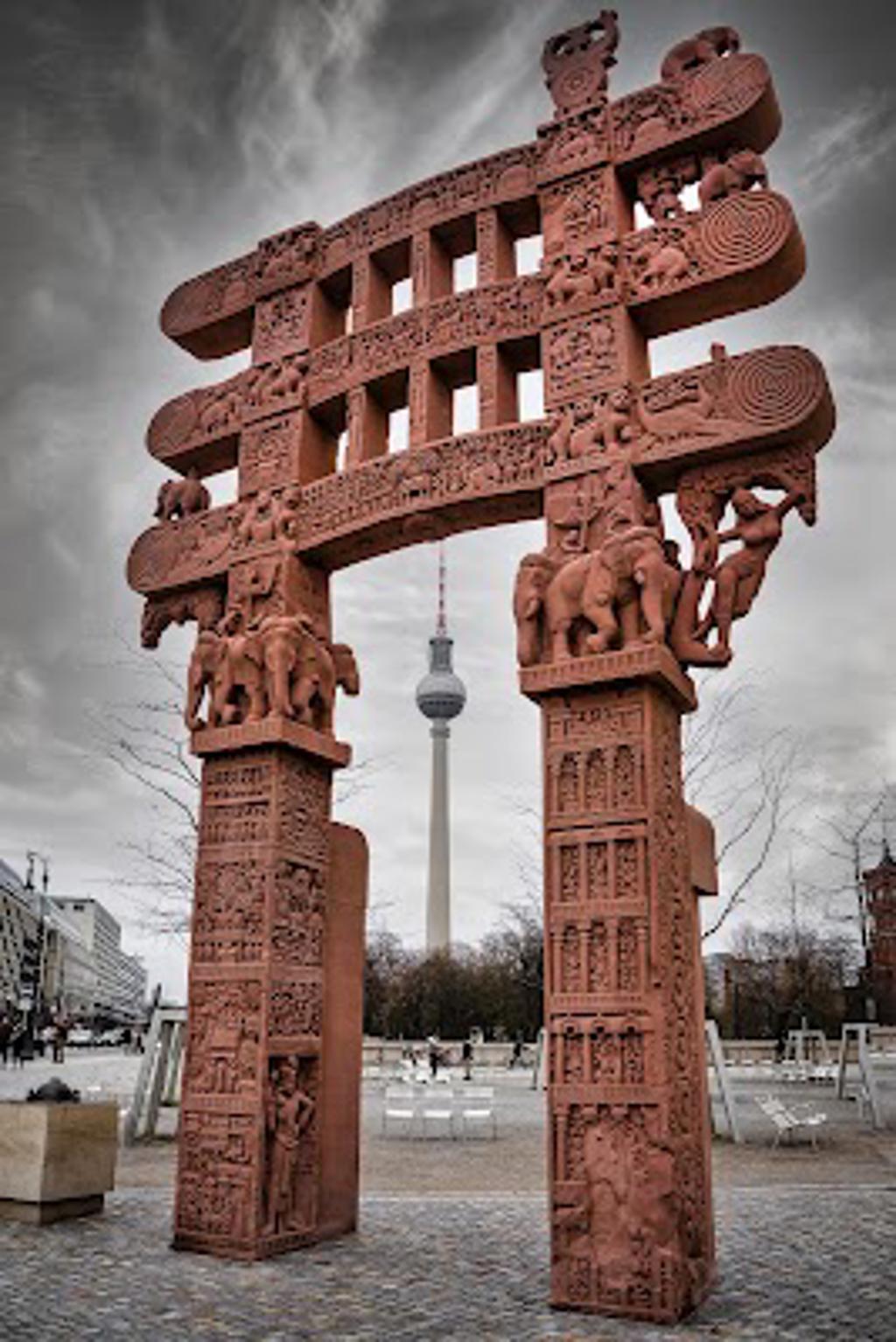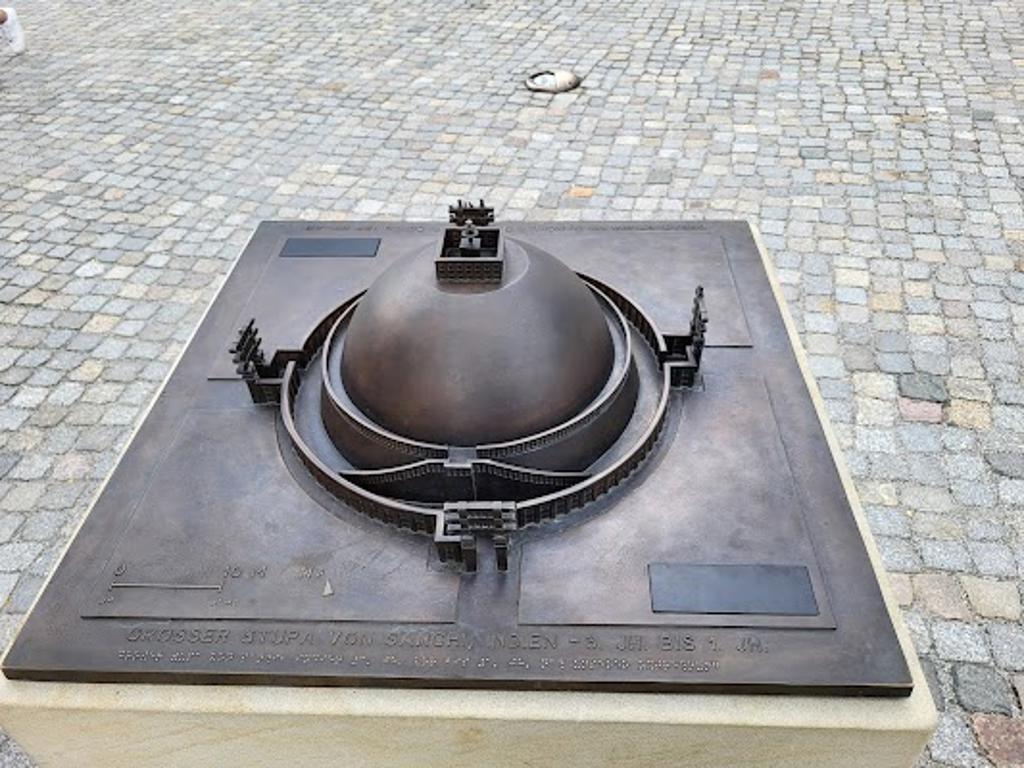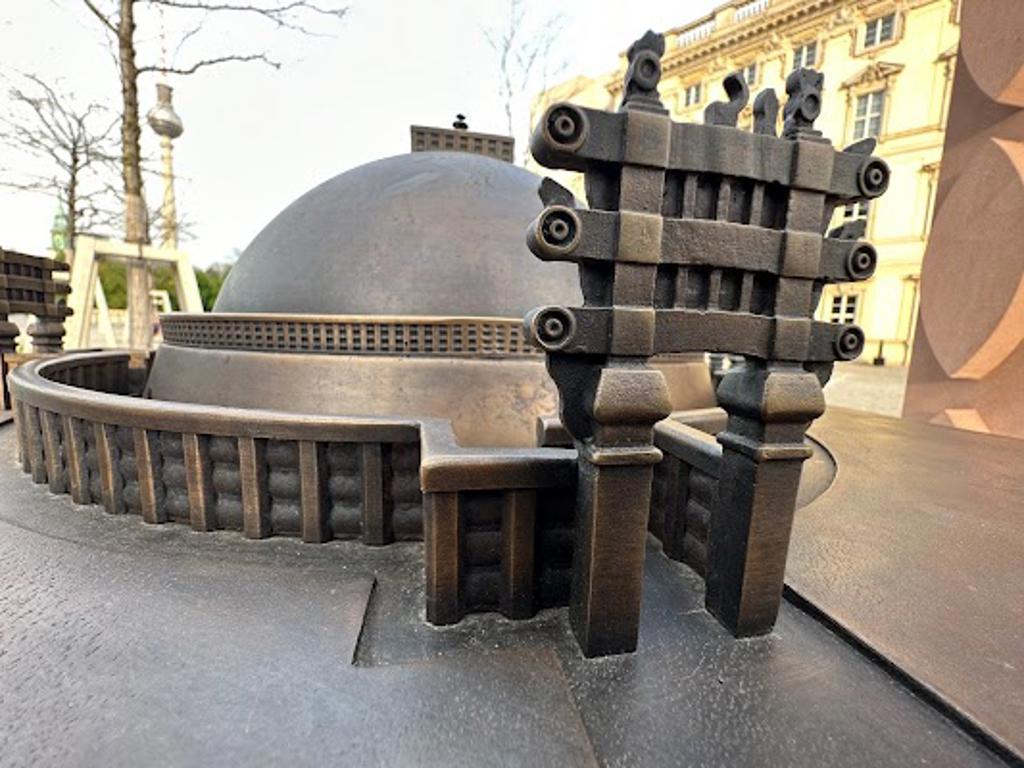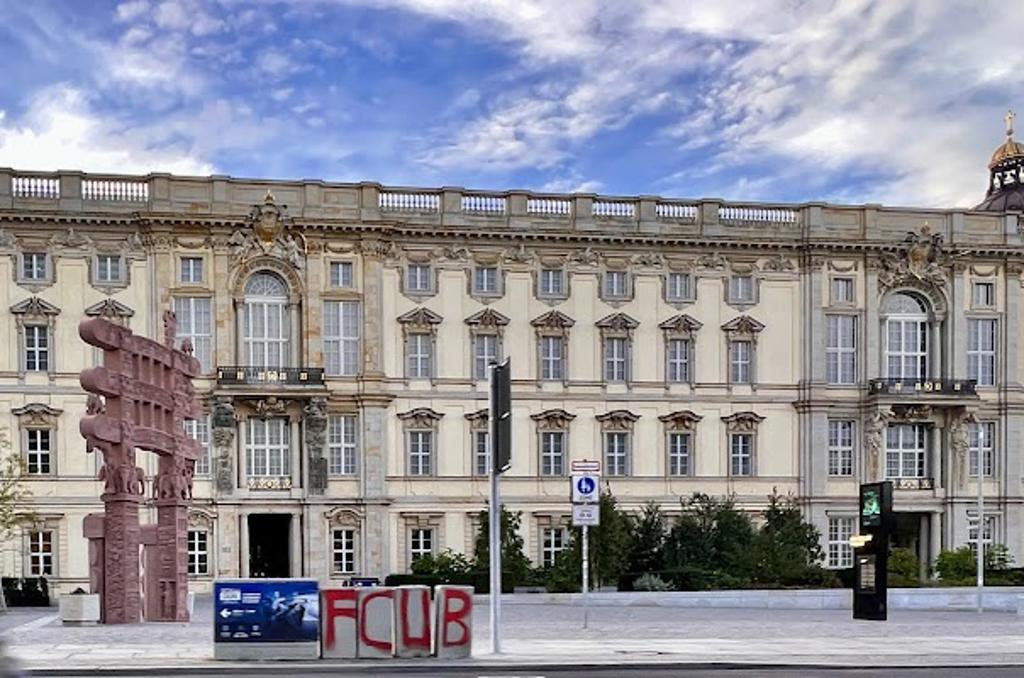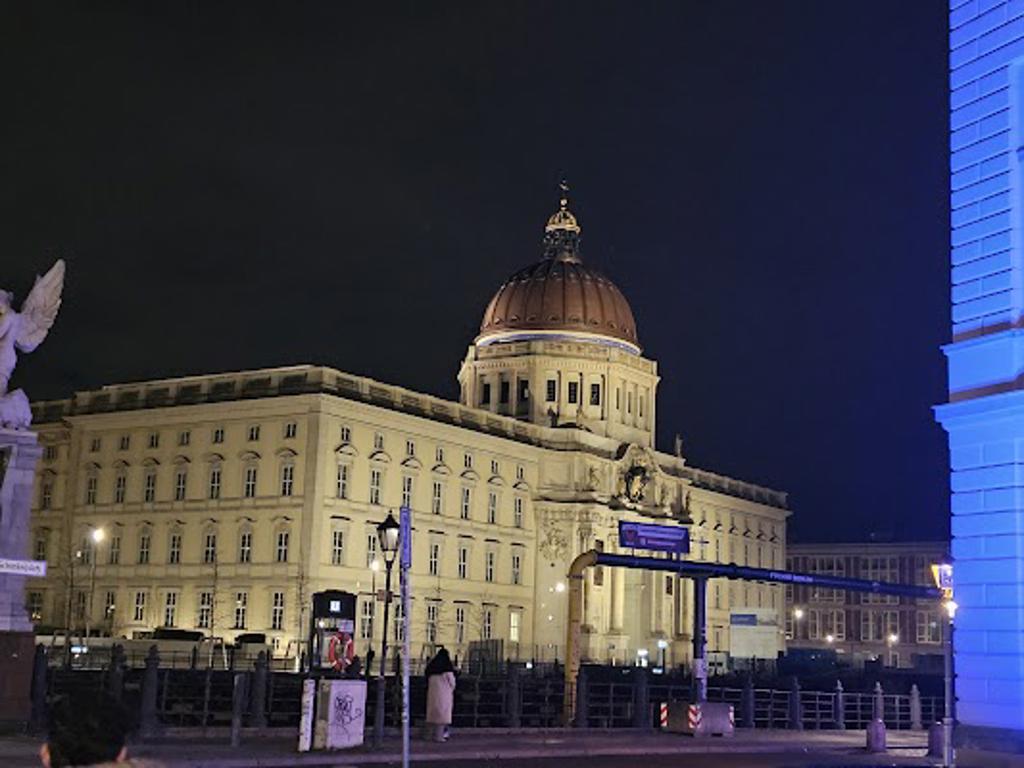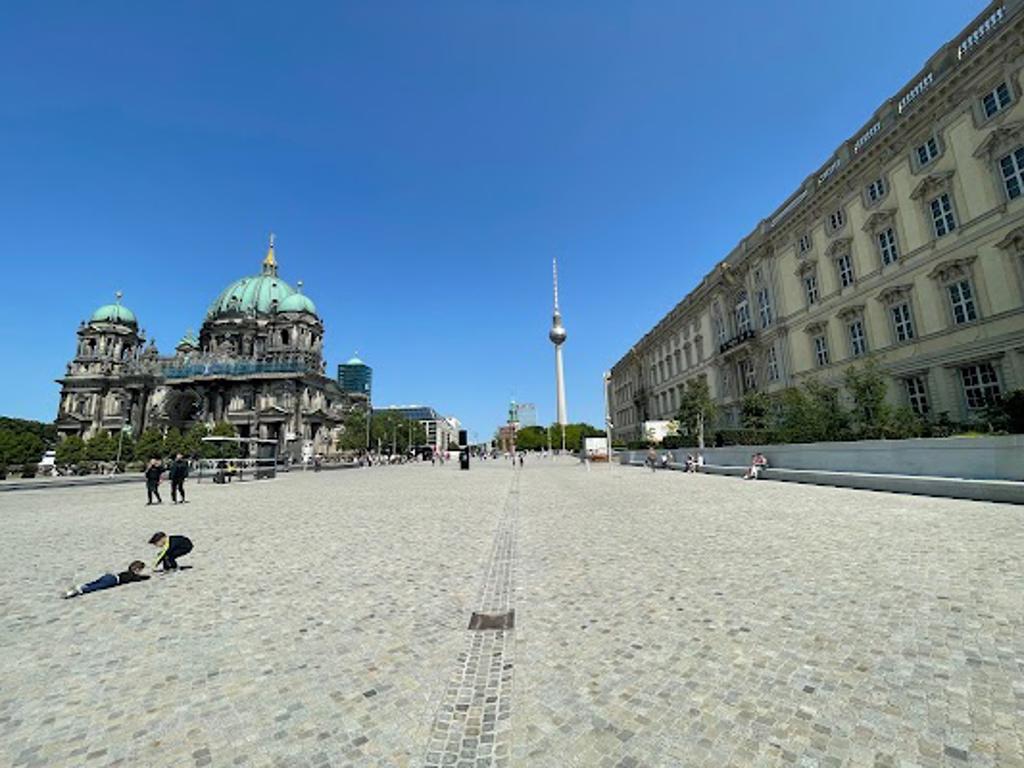About Sanchi-Tor
The Sanchi Gate, a striking replica of the ancient Indian gateways, stands as a testament to the cultural exchange between Germany and India. Its intricate carvings and towering structure immediately draw the eye, inviting visitors to explore its detailed artistry. The gate is adorned with motifs and figures that tell stories from the life of Buddha, capturing moments of enlightenment, teaching, and peace. The craftsmanship reflects the traditional Indian style, with its ornate decorations and symbolic representations, offering a glimpse into the spiritual and artistic heritage of ancient India.
Located in the historic Schloßplatz area of Berlin, the Sanchi Gate serves as a cultural bridge, connecting the rich traditions of India with the vibrant history of Germany. This replica was erected to celebrate the ties between the two nations and to provide a space for reflection and appreciation of Buddhist art and philosophy. The original Sanchi Stupa, from which this gate draws inspiration, is a UNESCO World Heritage site in India, dating back to the 3rd century BCE. The presence of this gate in Berlin underscores the city's role as a hub of cultural diversity and historical dialogue.
Artistic Elements and Symbolism
The Sanchi Gate is a marvel of artistic detail, with its carvings depicting scenes from the Jataka tales, which recount the previous lives of Buddha. Each panel is a narrative in itself, showcasing the values of compassion, wisdom, and selflessness. The torana, or gateway, is traditionally a symbol of transition and passage, marking the entrance to a sacred space. In Berlin, it stands as a metaphorical gateway to understanding and appreciating the depth of Buddhist teachings and Indian art. The use of stone and the precision of the carvings reflect the dedication to authenticity and cultural respect.
Plan your perfect trip to Berlin with Travo! Download now and start exploring.
Stories in Stone
The carvings on the Sanchi Gate are not merely decorative; they are storytellers in their own right. Each figure and motif is carefully chosen to convey a specific aspect of Buddhist philosophy. The depiction of animals, celestial beings, and human figures all play a role in illustrating the interconnectedness of life and the path to enlightenment. These stories, carved in stone, invite viewers to pause and reflect on the universal themes of peace and harmony that transcend cultural boundaries. The gate serves as a reminder of the timeless wisdom found in these ancient narratives.
Present-Day Significance
In contemporary Berlin, the Sanchi Gate is more than a historical replica; it is a symbol of cultural dialogue and mutual respect. It stands in a city known for its history of division and reunification, offering a space for contemplation and connection. Visitors from around the world gather here, drawn by the beauty of the gate and the stories it tells. The presence of the Sanchi Gate in Berlin highlights the city's commitment to celebrating global heritage and fostering an environment of learning and understanding across cultures.
Hidden Stories in the Details
Closer inspection of the Sanchi Gate reveals hidden stories and symbols that might be overlooked at first glance. The lotus flowers, for instance, symbolize purity and spiritual awakening, while the wheel motifs represent the Dharma, or the teachings of Buddha. The figures of elephants and lions are not just decorative; they are guardians of the sacred space, embodying strength and protection. These details, rich in meaning, encourage visitors to engage with the gate on a deeper level, uncovering the layers of history and spirituality embedded in its design.

